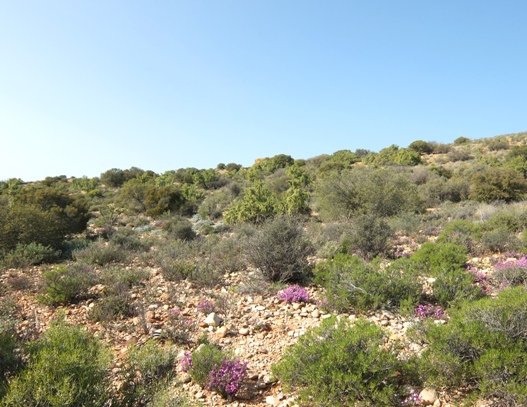Spekboomveld

Author: Ivan Lätti
Photographer: Thabo Maphisa
Some stony slopes facing north or west in the Little Karoo are characterised by Portulacaria afra or spekboom, the large yellow-green shrubs in the centre of the picture. They grow among an often repeated mix of other shrubs species where similar conditions prevail.
Where one plant dominates or is readily found in a typical vegetation pattern, it may become the identifier of an ecological category, in this case called spekboomveld. Nature surprises us with its many faces and whims, changing as one or few veld identifier variables assume slightly different values, e.g. the gradient becomes steeper, the soil becomes deeper or the sun visits for longer in summer or winter.
Vlok and Schutte-Vlok (2010) have differentiated a series of veld types characterising the Little Karoo, describing the lie of the land and associated vegetation of each. They have for instance differentiated between spekboomveld in this region where much pruim or Pappea capensis grows and spekboomveld with many guarri or Euclea undulata trees. The land in picture has much guarri.
Such classifications may be broad, using few classifier variables and allowing more intra-category variability, or on the contrary, differentiating more categories in more precise and rigorous style. How one does it depends upon the purpose.
The more veld types created, the more the "grey areas" of intermediate nature between each pair of them, difficult to assign to a category, and the less agreement there will be between different participants in the classification exercise.
Distinguishing veld types has many benefits. This includes study of interaction of species in identified ecological conditions, factors impacting in each micro-environment, where to look for what plant or animal and following change patterns over time.

